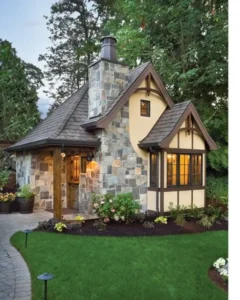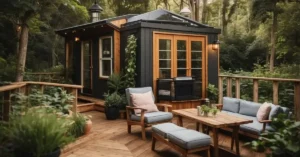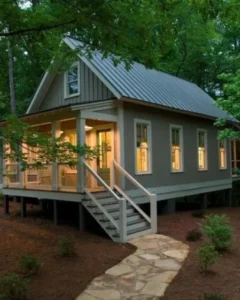
Tips for Choosing One Bedroom House Floor Plans
Consider Your Lifestyle
The first thing to consider is your lifestyle. Do you need a lot of space for entertaining guests? Do you work from home and need a dedicated office space? Make a list of your must-have features and prioritize them. This will help you narrow down your options and find a floor plan that fits your lifestyle.
Think About Future Needs
It’s important to think about your future needs when choosing a one bedroom house floor plan. Do you plan on expanding your family in the future? Do you want a space for a home gym or hobby room? Make sure the floor plan you choose can accommodate your future needs.
Pay Attention to Layout
The layout of a one bedroom house floor plan is crucial. Make sure the layout is functional and flows well. Consider the placement of windows, doors, and furniture. A well-designed layout can make a small space feel larger and more open.
Look for Storage Solutions
Storage can be a challenge in a one bedroom house. Look for floor plans that offer creative storage solutions, such as built-in shelving or under-bed storage. This will help you maximize your space and keep your home organized.
Consider Energy Efficiency
Finally, consider the energy efficiency of the floor plan. Look for features such as energy-efficient windows, insulation, and appliances. This will not only save you money on your energy bills but also reduce your carbon footprint.
Inspirations for One Bedroom House Floor Plans
Discover innovative layouts that maximize space and create your perfect one-bedroom oasis.
6.5×6.5 m One Bedroom

7×6 m One Bedroom

8×6 m One Bedroom

6,7×6,7 m Bedroom

6×6 m One Bedroom

7,6×10,6 m One Bedroom

6,7×12,8 m One Bedroom

If you prefer to get inspiration from a video, I recommend this one:
How to arrange a one bedroom house?
Here are some tips for arranging a one bedroom house: Define separate areas for sleeping, living, and dining to make the most of limited space. Opt for multifunctional furniture like beds with built-in storage. Maximize vertical space with wall shelves and under-bed storage. Choose light colors and furniture placement that opens up the room. Consider a murphy bed or loft bed to free up floor space.
What are the common mistakes in floor planning?
Some common mistakes in floor planning include failing to consider the home’s intended use, natural light and views, storage needs, and indoor and outdoor flow. Other issues are an ill-fitting layout, inadequate room sizes, poor traffic flow, lack of storage, and neglecting codes or buildability challenges. It’s important to avoid designs that won’t work for the site or the homeowners’ needs.
What details are not typically shown on a standard floor plan?
Standard floor plans typically do not show details like exact cabinet, closet and built-in dimensions, specific plumbing fixture locations, electrical outlet and switch placements, individual window sizes and types, appliance positions, stair/railing specs, or floor/wall/ceiling finishes. They focus on overall room shapes, sizes and door/window positions, omitting more detailed architectural and design elements to maintain clarity and simplicity.
If you liked this blog article about the topic “One Bedroom House Floor Plans”, don’t forget to leave us a comment down below to tell us about your experience.
Not enough inspiration yet?
Feel free to also check out our other Articles from the category “Tiny House“ and don’t forget to follow us on Pinterest.



